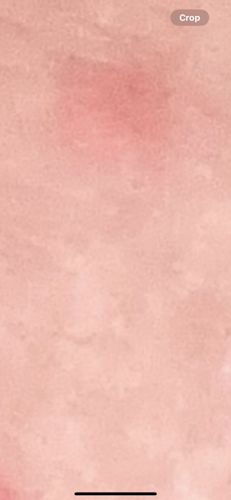Ant bites
Scientific Name: Formicidae (various species)
Order & Family: Hymenoptera, Formicidae
Size: N/A (The image shows an reaction to a bite, not the insect itself. Ant sizes vary greatly depending on species, from 1 mm to 30 mm in length.)

Natural Habitat
Ants are global and found in almost all terrestrial habitats, including forests, deserts, urban areas, and grasslands. Bites usually occur when humans intrude on their nests or foraging paths.
Diet & Feeding
N/A (Ant diets are highly varied by species; they can be predators, scavengers, herbivores, or omnivores. Some farm fungi or tend aphids.)
Behavior Patterns
N/A (Ants live in highly organized colonies. Bites occur as a defensive mechanism when they feel threatened or their nest is disturbed. The red mark suggests an inflammatory reaction to the formic acid or other compounds injected during a bite.)
Risks & Benefits
Risks: Ant bites can cause localized pain, redness, swelling, and itching. For some sensitive individuals, or with multiple bites, larger local reactions or even systemic allergic reactions (anaphylaxis) can occur, though this is less common than with stings from wasps or bees. Fire ant stings, in particular, can cause painful pustules. Benefits: Ants play crucial roles in ecosystems, including soil aeration, seed dispersal, pest control (predation on other insects), and decomposition of organic matter. From a human perspective, ant bites themselves offer no direct benefit.
Identified on: 9/4/2025